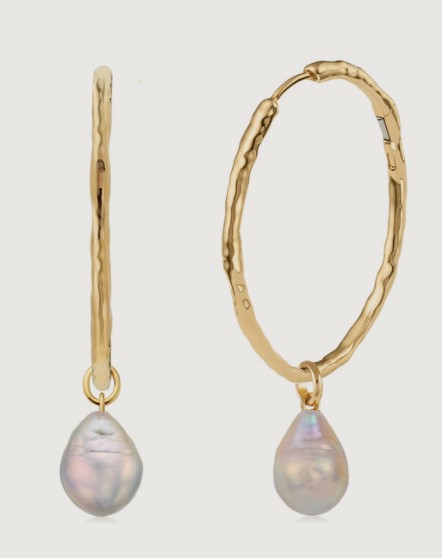But — take note — it also means they get all the downside when that index falls. • Whereas a passive strategy is designed to follow one market sector index (e.g. the performance of large cap U.S. companies via the S&P 500® index), https://www.xcritical.com/ an active manager can be more creative and is not limited to a single sector. This material does not take into account any specific objectives or circumstances of any particular investor, or suggest any specific course of action.
The trading strategy that will likely work better for you depends a lot on how much time you want to devote to investing, and frankly, whether you want the best odds of success over time. Our goal is to give you the best advice to help you make smart personal finance decisions. We follow strict guidelines to ensure that our editorial content is not influenced by advertisers. Our editorial team receives no direct compensation from advertisers, and our content is thoroughly fact-checked to ensure accuracy.
- Passive funds track a benchmark index and try to mimic its performance.
- With passive investing continuing to grow in popularity, the various merits of the two approaches continue to be subject to fierce debate.
- Passive investments can provide broad exposure to a market with minimal fees, making them a popular choice for long-term investors.
- According to industry research, around 38% of the U.S. stock market is passively invested, with inflows increasing every year.
- Get stock recommendations, portfolio guidance, and more from The Motley Fool’s premium services.
- Passive vs. active management doesn’t have to be an either/or choice for advisors.
References to any securities or digital assets are for illustrative purposes only and do not constitute an investment recommendation or offer to provide investment advisory services. Furthermore, this content is not directed at nor intended for use by any investors or prospective investors, and may not under any circumstances be relied upon when making a decision to invest in any strategy managed by Titan. TIAA managed accounts offer professional management to help you feel confident your portfolio is aligned with your goals and investment style, especially during continued volatility.
You can do active investing yourself, or you can outsource it to professionals through actively managed mutual funds and active exchange-traded funds (ETFs). These provide you with a ready-made portfolio of hundreds of investments. For someone who doesn’t have time to research active funds and doesn’t have a financial advisor, passive funds may be a better choice. Passive investing strategy is when an investor buys and holds a mix of assets for an extended period. Many passive investors will invest in passively-managed index funds, which attempt to replicate the performance of a benchmark index.
Unlike passive investing, which aims to match the market, active management’s goal is to outperform the market. You’ll mainly be tied down to index funds, which are comprised of predetermined investment options. Although there are passive funds that invest in more specific areas of the market, such as real estate or commodities, your options will be more limited.
Ask Any Financial Question
This team of experts helps Finance Strategists maintain the highest level of accuracy and professionalism possible. At Finance Strategists, we partner with financial experts to ensure the accuracy of our financial content. IG International Limited is part of the IG Group and its ultimate parent company is IG Group Holdings Plc. IG International Limited receives services from other members of the IG Group including IG Markets Limited. Dow Jones Industrial Average, S&P 500, Nasdaq, and Morningstar Index (Market Barometer) quotes are real-time. This site is protected by reCAPTCHA and the Google Privacy Policy and Terms of Service apply.
Fees for both active and passive funds have fallen over time, but active funds still cost more. In 2018, the average expense ratio of actively managed equity mutual funds was 0.76%, down from 1.04% in 1997, according to the Investment Company Institute. Contrast that with expense ratios for passive index equity funds, which averaged just 0.08% in 2018, down from 0.27% in 1997. Benefits of passive investing
With passive investing, there is no fund manager paid to choose individual stocks or bonds, and most index funds charge ultra-low fees that are below those of active funds. Index funds buy and then hold securities as they are added to the index, rather than frequently trading stocks or bonds.
A New Take on the Active vs. Passive Investing Debate
Using that information, managers buy and sell assets to capitalize on short-term price fluctuations and keep the fund’s asset allocation on track. While some passive investors like to pick funds themselves, many choose automated robo-advisors to build and manage their portfolios. These online advisors typically use low-cost ETFs to keep expenses down, and they make investing as easy as transferring money to your robo-advisor account. Some specialize in picking individual stocks they think will outperform the market. Others focus on investing in sectors or industries they think will do well.
Passive investing using an index fund avoids the analysis of individual stocks and trading in and out of the market. The goal of these passive investors is to get the index’s return, rather than trying to outpace the index. Passive, or index-style investments, buy and hold the stocks or bonds in a market index such as the Standard & Poor’s 500 or the Dow Jones Industrial Average.
Why TIAA
Passive vs. active management doesn’t have to be an either/or choice for advisors. Combining the two can further diversify a portfolio and actually help manage overall risk. Clients who have large cash positions may want to actively look for opportunities to invest in ETFs just after the market has pulled back. Only a small percentage of actively managed mutual funds do better than passive index funds.
A vast array of indexed mutual funds and exchange-traded funds track the broad market as well as narrower sectors such as small-company stocks, foreign stocks and bonds, and stocks in specific industries. Passive investing strategies often perform better than active strategies and cost less. The value of professional management
Our current market and geopolitical environment is making investment selection even more challenging. Active investors can benefit from professional monitoring of the performance of an actively managed fund—and of the fund manager. The outcomes of an actively managed fund can vary widely from a passively managed fund. Professional oversight of the fund, like you get in TIAA’s managed accounts, is an advantage.

Market conditions change all the time, however, so it often takes an informed eye to decide when and how much to skew toward passive as opposed to active investments. While there are advantages and disadvantages to both strategies, investors are starting to shift dollars away from active mutual funds to passive mutual funds and passive exchange-traded funds (ETFs). As a group, actively managed funds, after fees have been taken into account, tend to underperform their passive peers. Index funds, such as low-cost ETFs or passively managed mutual funds, are affordable investment vehicles with lower management fees and reduced trading activity.
What Was the First Passive Index Fund?
This may give you some level of control when market conditions are volatile. Actively managed investments charge larger fees to pay for the extensive research and analysis required to beat index returns. But although many managers succeed in this goal each year, few are able to beat the markets consistently, Wharton faculty members say. Passive investing and active investing are two contrasting strategies for putting your money to work in markets.
Your goal would be to match the performance of certain market indexes rather than trying to outperform them. Passive managers simply seek to own all the stocks in a given market index, in the proportion they are held in that index. Hedge funds and private equity managers are one example, charging enormous fees (sometimes 10%, 15%, 20% of returns) for their investing acumen. But even run-of-the-mill actively managed funds, which may charge 1% or 1.5% or even 2% annually, are far higher than the investment fees of most passive funds, where the annual expense ratio might be only a few basis points.
For example, an active strategy might well serve someone close to retirement who lacks the time to recover from large losses or who is focused on building a steady stream of income instead of seeing regular long-term capital gains. Perhaps the easiest way to start investing passively is through a robo-advisor, which automates the process based on what is one downside of active investing your investing goals, time horizon and other personal factors. Many advisors keep your investments balanced and minimize taxable gains in various ways. To get the market’s long-term return, however, passive investors have to actually stay passive and hold their positions (and ideally adding more money to their portfolios at regular intervals).
Which Should You Pick: Active or Passive Investing?
And the difference would only compound over time, with the lower-cost fund worth about $3,187 more after 20 years. Almost 81% of large-cap, active U.S. equity funds underperformed their benchmarks. • Passive strategies are more vulnerable to market shocks, which can lead to more investment risk. The following table recaps the main differences between passive and active strategies.










